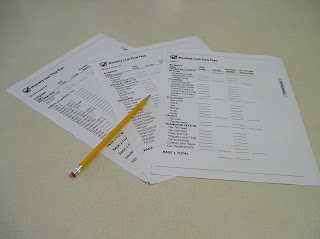These are the steps we take to do our budget, here we'll deal with Step 2.
- Determine income and pay periods for the month
- Name your Income
- Make it balance
- Allocate your expenses for each week
- Prioritize Irregular Income
Step 2: Name Your Income
Now that you have your total income in front of you, you'll need to determine where to send it. We recommend prioritizing your naming so that you have the basics covered. On a calculator, or a piece of scrap paper if you're arithmetic savvy, subtract each item from your total as you go. This will help you see how far your paycheck can go.
If you run out of money before getting to the end of the list, don't worry, go ahead and finish. We'll deal with the overage in Step 3 and Step 5.
- Charitable giving - we do 10% of total income - whether to a church or a non-profit, giving a portion of your money away not only gives you a warm fuzzy feeling and makes you a better person, but it also will help you relax if money is a point of stress
- Savings: If your savings account/emergency fund is below $1000, try to raise it. (If you can't fill it completely and cover #3, do as much as you can.)
- Four Walls: House, Food, Transportation, Clothing - this includes mortgage/rent, utilities, diapers, fresh veggies, car payment, gas, oil changes, new underwear, all insurance premiums and anything else that you need to function. This does not include: brie, beer, spinners, another purse or that cute baby dress.
- Incidental expenses - includes such things as date night, trip to see grandparents, birthday gifts, a hair cut, and other things which help keep you sane, but are not truly necessary for survival. Remember, getting out of debt is about cutting life style. This is where your lifestyle will be cut.
- Outstanding debt - Make sure to pay the minimum on everything first, then add any remaining income to the debt with the smallest total balance. Try to pay it off completely. When you do, you can add that minimum payment to the minimum of the next smallest debt which will help you pay that one off faster. This is the principal behind the Debt Snowball. Don't worry about which debt has the highest interest rate, just pay things off as fast as possible so you can tell your money where to go instead of wondering where it went.
When we got to the end of this step the first few times we did our budget, it felt like we got a raise. It's amazing how much even a little bit of money can do, when you know what it's doing and why.
We'll cover Step 3 in our next post, in which we'll determine who does get paid and who does not.

No comments:
Post a Comment